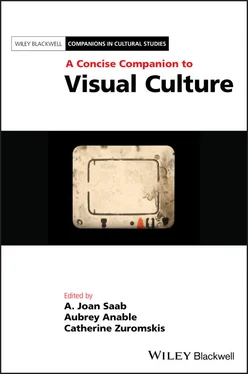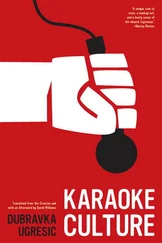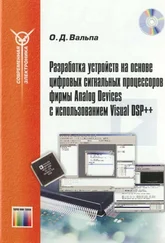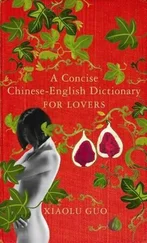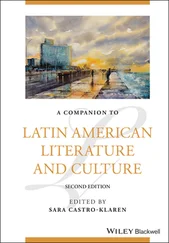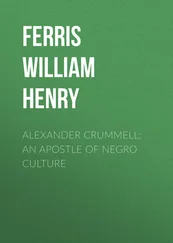1 ...6 7 8 10 11 12 ...36 A bit of background on our academic training may help to explain what we brought to the table in this work when we set out to write this book in the mid‐1990s. We both came from backgrounds in art practice—Marita in photography and video, Lisa in sculpture and film. At the time when we began our collaboration, Lisa was teaching in a new PhD program that straddled art history and an English‐ and comparative literature‐based film studies program at the University of Rochester. Originally called Comparative Studies, the program had been renamed Visual and Cultural Studies in 1991, to reflect allegiance to the British cultural studies tradition (the Birmingham‐trained sociologist of art Janet Wolff had been hired to direct the program) while maintaining the visual studies concept that circulated at the time in “the new art history” (Harris 2001, Jõekalda 2013). This orientation was reflected in the work of comparative literature scholar Mieke Bal and art historian Michael Ann Holly, who remained on the Rochester faculty after Norman Bryson’s departure for Harvard and the untimely death of art critic and queer theorist Craig Owens in 1990—the year in which Lisa joined the faculty to teach in the film studies and global health majors. Douglas Crimp had been hired to teach in the program not only as an art historian but also as a cultural theorist of activism and sexuality, on the basis of his groundbreaking contributions to activism and theory around HIV/AIDS. Thus theory and cultural studies of sexuality and health were foundational to visual culture as it was taught at Rochester from the 1990s through the end of the 2010s, a conjuncture that ended with Crimp’s death in 2019. Film (and later media) studies, a program in which Sharon Willis, Constance Penley, Kaja Silverman, and David Rodowick taught, was also a part of the comparative studies configuration, making Rochester one of the few places in the early 1990s where one could pursue doctoral studies that spanned art history and film studies while maintaining a sustained commitment to bridging art practice and critical theory.
At the same time, our ideas about the book involved contributions from communication studies, a field that was foundational to cultural studies both in the United Kingdom (through sociology at Birmingham) and in the United States (through the University of Illinois Champaign‐Urbana campus, where Treichler and Larry Grossberg taught). Marita was teaching at the University of California, San Diego, in a communication department (which Lisa would later join) that was acquiring faculty members in humanities‐based cultural studies and critical theory, and that offered feminist political theory. Marita later moved to the Annenberg School for Communication at the University of Southern California, to a program that was largely social science‐based and had strengths in mass communication and communication management; she was one of the first faculty members at this leading communication school with a profile in visual and cultural studies. Later, colleagues at Annenberg such as Sarah Banet‐Weiser, Larry Gross, Josh Kun, and Henry Jenkins would take part in expanding the more traditional communication curriculum into visual culture, popular culture, and feminist media studies.
Our combined work on Practices of Looking was thus informed in great part by a practical desire for the book to support combined approaches that encompassed our mix of commitments, as well as our aim to speak to students across a range of disciplinary contexts. Our goal was to offer a kind of flexible toolbox of theories and examples to the core curricula of visual culture studies as the latter was introduced to fields such as art practice, art history, film, comparative literature, and literary studies. We briefly considered an anthology, but felt the need was more urgent for a book that, like Berger’s Ways of Seeing , synthesized and explained how this conjuncture of concerns and approaches came together and how it could work into the future.
Our prior experience in arts‐based media practice informed our conception of the book as well, and merits explanation. This orientation may explain why the book has been widely adopted in art schools. In the second and third editions we were more explicit in our redesign of the book so as to match changes in art school and art training contexts. In 1960, British art schools were subject to a compulsory art history and design curricular components (Gee 2017, 61), with the interesting side effect that art students, in Britain at least, were likely to encounter the Marxist, feminist, semiotic, and psychoanalytic theories that would come to inform the new art history of the 1970s and 1980s. In the United States, the Marxist and psychoanalytic turn in film studies generated attention to research‐based structural and experimental film practice and political art film. Theory was done not only in writing but also in the forms of film and video. Experimental and political art film and the new medium of video art followed photography into the art school curriculum during this decade. At the same time, the shift in focus, in the 1970s, from popular literature to cinema and television at the Birmingham School’s Centre for Contemporary Cultural Studies under Stuart Hall brought the discipline of cultural studies squarely into the realm of visual theory, and its focus on means of production in turn informed both art film practice and humanities‐based film studies pedagogy, in a range of national settings where Frankfurt School theory had made inroads. Convergence, a term often used to describe industry technology mergers, impacted field formation in myriad ways. Cultural studies approaches were combined, in ways that were sometimes contradictory and messy, with semiotic, feminist, and psychoanalytic theories, as well as with American cultural studies approaches coming out of communication research programs such as the one at the University of Illinois at Champaign‐Urbana.
In the United States, these theories were variously informing visual practice in just a few institutions—notably Cornell, where Marita studied photography before decamping to study photography and video at the Visual Studies Workshop in Rochester, and the Whitney Museum Independent Study Program, where Lisa briefly studied. Our early choice of media over more traditional art forms was consistent with postminimalist turns toward media in the era of institutional critique (consider Allan Sekula’s hybrid critical theory and photography practice, or Richard Serra’s 1973 video installation Television Delivers People ) and with the turn to video performance (as seen in the work of Martha Rosler) and to political cinema (exemplified by Yvonne Rainer’s experimental theory film narratives) in feminist art practice. The critical theory emphasis on practice informed a turn to video criticism in Marita’s practice that was published in the Visual Studies Workshop‐based journal Afterimage ; then it led her to work in the Museum of Modern Art film department. Lisa shifted from experimental film practice to feminist and queer media criticism with the Heresies Collective, a women’s group and movement that produced a path‐breaking issue on women and political media practice in its eponymous journal. These turns toward research and writing remained grounded in an affinity with practice and activism, feeding a broader theory–practice ethos that eventually shaped our collaboration on Practices of Looking .
Our graduate “training” in the field of visual culture scholarship was idiosyncratic, though in different ways. We both shunned traditional art history and cinema studies, joining instead programs oriented toward training in political theory and social history. Lisa did her doctoral study in the American Studies department at Yale University; there she focused on photography history with Alan Trachtenberg and on film theory with David Rodowick, but applied all this to biomedical imaging, engaging feminist health activism and technoscience theory. The History of Consciousness Program at the University of California, Santa Cruz, from which Marita received her PhD, was renowned for its constellation of postmodern, feminist, and critical theory scholars; these included historians Hayden White and James Clifford and feminist science studies scholar Donna Haraway. Yet at the time the program had only minimal engagement with visual culture, through the work of film theorist Teresa de Lauretis. We offer these details in part to demonstrate that the field of visual culture emerged not simply through academic “interdisciplinarity,” a buzzword of the 1990s, but through the negotiation of political interests and concerns with an orientation to the visual that was deeply invested in the politics of cultural production—the theorizing of which our book offers mixed tools. Thus, although the field’s foundation is in many cases narrated as a merger between art history and newer fields, such as comparative literature or film studies, those disciplines were not primary points of reference or direct venues of training for either of us, despite our engagement with contemporary art practice and many of the core aspects of those fields. Thus our agenda—to make over John Berger’s account—was strongly motivated by this sense that visual culture’s foundation must be broader, because the field is so much more entangled in a reflexive political history of cultural practice than is suggested by a version of visual culture studies conceived of either as the new art history or as the disciplinary merger of the new art history and the film and media theory of the 1990s. We were also motivated by what Donna Haraway (2016) more recently has called “staying with the trouble”: holding on to differences rather than offering a unified account.
Читать дальше
